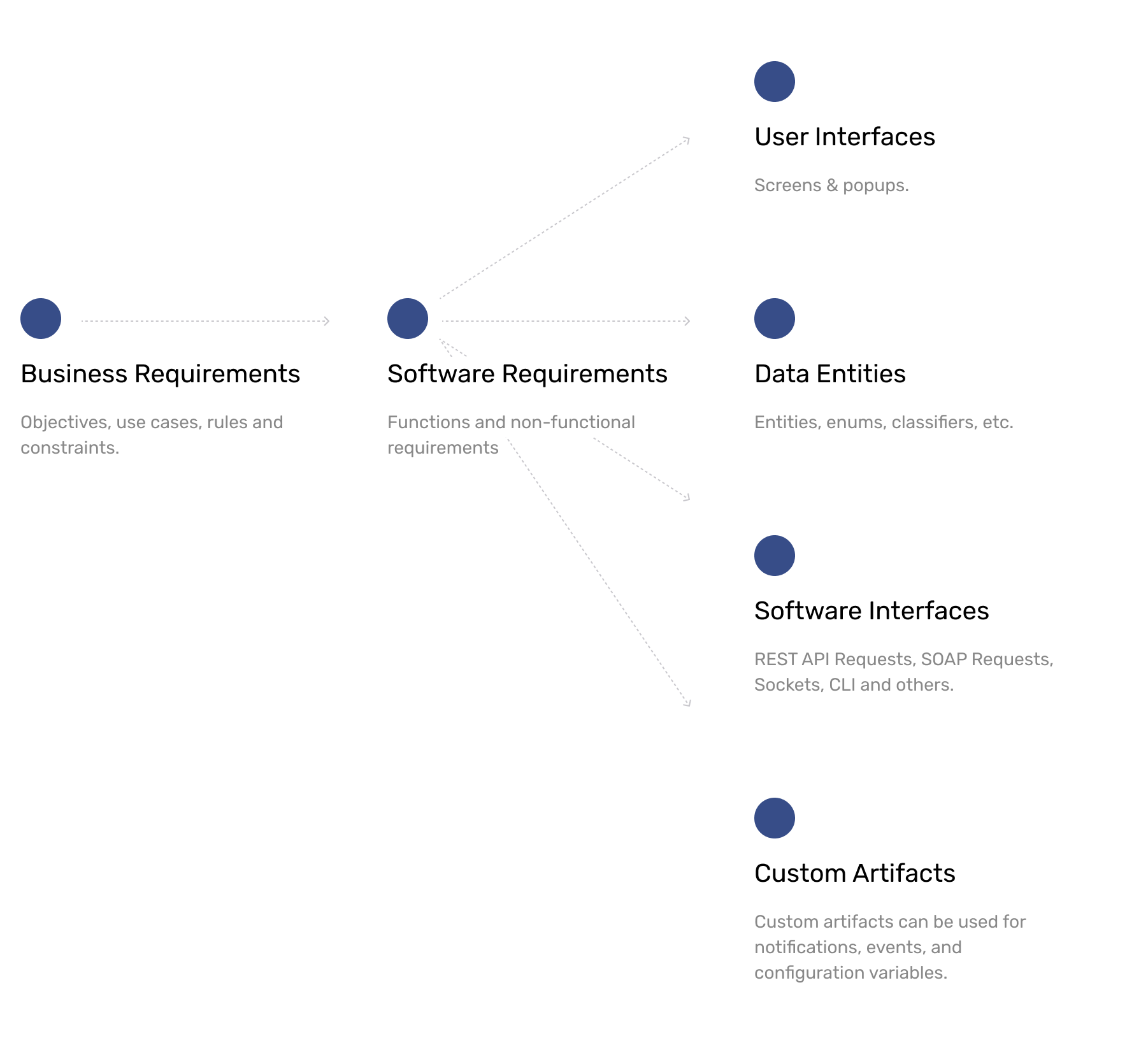Thank you! We will contact you shortly.
Contact Us
Software Requirements Overview
What Are Software Requirements?
In Almware, a software requirement is a key component that describes specific software needs. These requirements serve as the main connection point between business needs, technical details, and other related information, allowing for easy tracking and management.

How Requirements Are Treated
In Almware, software requirements are handled as individual items rather than large documents. Each requirement usually focuses on a single function or key feature of the system.
Breaking Down Requirements
Requirements are broken down into smaller, user-recognizable functions. For example, basic operations like creating, reading, updating, and deleting (CRUD) should be separated into at least four different requirements. If an entity has a more complex lifecycle or extra functions, more detailed requirements may be needed.
Common rules or criteria that apply to multiple functions, such as data validation rules for both creating and editing, can be grouped into a separate requirement. This grouped requirement can then be linked to other related requirements to ensure consistency.
Describing Requirements
To describe a requirement, you can use:
- Text descriptions
- Acceptance Criteria
- Uploaded Files
- Diagrams made with the built-in editor
- Files from other services like Google Docs or Figma, if integrated
Classifying Requirements
Software requirements can be classified using various attributes, such as:
| Name | Description |
| Type | The type of software requirement is selected from the predefined types. E.g. Functional Requirenent, Non-Functional Requirement, etc. |
| Folder | The hierarchy it belongs to. |
| Subsystems | Where the requirement will be implemented. |
| Actors | Who will interact with the system regarding this requirement. |
| Domain Area | The specific business area the requirement relates to. |
| Requirements Module | Module is a group of related requirements. |
| Priority | The importance of the requirement. |
| Labels | Custom tags for further classification. |
| Custom Attributes soon | User-defined attributes for additional classification. |
Types of Requirements
Types of software requirements are customizable.
At least, you can customize two types of requirements:
- Functional requirements: These describe specific functions of the system.
- Non-functional requirements: These describe qualities or characteristics of the system that are not tied to specific functions.
Linking Requirements
Requirements in Almware can be linked to each other and to other related items, such as:
| Relation | Description |
| Business Requirements | The higher-level needs that justify the software requirement. |
| Software Requirements | Other related software requirements. |
| Specifications | Detailed documents or files that further explain a requirement. |
Specifications
You can associate a software requirement with specifications, such as:
| Relation | Description |
| User Interfaces | The design elements for the requirement. |
| Data Entities | Specifies the data model artifacts related to the requirement including the type of operations involved (create, read, update, delete). |
| Software Interfaces | APIs and other software interfaces related to the requirement. |
| Custom Artifacts | User-defined artifacts. |
Test Cases and Source Code beta
Requirements can include test cases to ensure they are implemented correctly. They can also be linked to the source code, allowing for easy tracking of changes and their impact on the requirement.